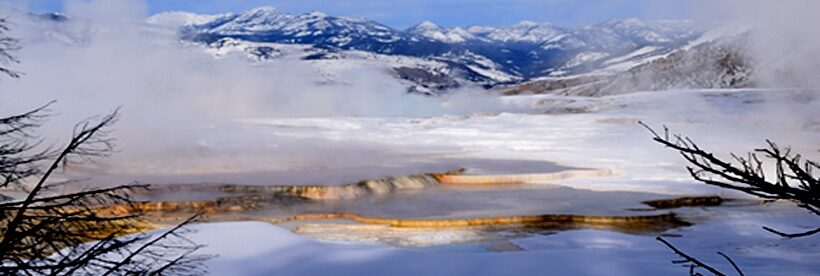
Finally – the work done by myself and my co-authors, Don Lofgren, Steve Hasiotis, and Bill McIntosh, is published in the new issue of Acta Palaeontologica Polonica 67 (1): 5–20. Our work combines chronostratigraphy with depositional environment interpretations and paleosol-trace fossil associations for a new view of a well-known Eocene vertebrate locality in southwest Montana. We had fun and learned much from integrating various aspects of Pipestone’s Eocene geology, vertebrate paleontology, ichnofossils, and radioisotopic age constraints to better understand this amazing locality.
Here’s the abstract:
Sanidine 40Ar/39Ar ages of lapilli tuffs and the mammalian fauna of Pipestone Springs strata provide a high-resolution chronostratigraphy for upper Eocene (Priabonian) rock units in southwestern Montana. Two felsic lapilli tuffs with weighted-mean 40Ar/39Ar single crystal sanidine ages of 37.50±0.02 Ma and 36.00±0.20 Ma both fall within the
Priabonian, late Eocene. These tuffs occur within the basal to upper part of the 55 m of exposed Pipestone Springs strata. The uppermost 15 m yield a diverse and abundant assemblage of mostly small-bodied middle Chadronian (Priabonian, late Eocene) mammals. The older lapilli tuff is an ashfall tuff, whereas the younger lapilli tuff exhibits minor aeolian reworking. The new 40Ar/39Ar age constraints significantly increase the age range of Pipestone Springs strata to include uppermost Duchesnean–lowermost Chadronian (Priabonian, upper Eocene) deposits in addition to its well-known middle
Chadronian vertebrate assemblage. These new 40Ar/39Ar ages combined with its mammalian fauna further support Pipestone Springs strata as age-correlative to the Flagstaff Rim section in central Wyoming, and provide a basis for better determining late Eocene mammalian paleogeography and regional paleolandscapes in the United States Rocky Mountain to Great Plains areas. Loessites intercalated with paleosols dominate Pipestone Springs deposits. The recognition of loessites comprising these strata is a new depositional interpretation of Pipestone Springs strata, making these loessites some of the oldest known aeolian Eocene strata in the Great Plains–Rocky Mountains region. Pipestone Springs paleosols developed on lapilli tuffs are vertisols. Alfisols and inceptisols, developed from a parent material of volcanic glass mixed
with non-volcanic grains, are the remaining paleosols within the loessite strata. Additionally, a new and important discovery in this project is the recognition that all paleosols are extensively bioturbated, containing trace fossils similar to Rebuffoichnus and newly identified trace fossils resembling Feoichnus, Eatonichnus, Fictovichnus, and Coprinisphaera.
Link to publication pdf: Pipestone_hanneman and others


Thank you